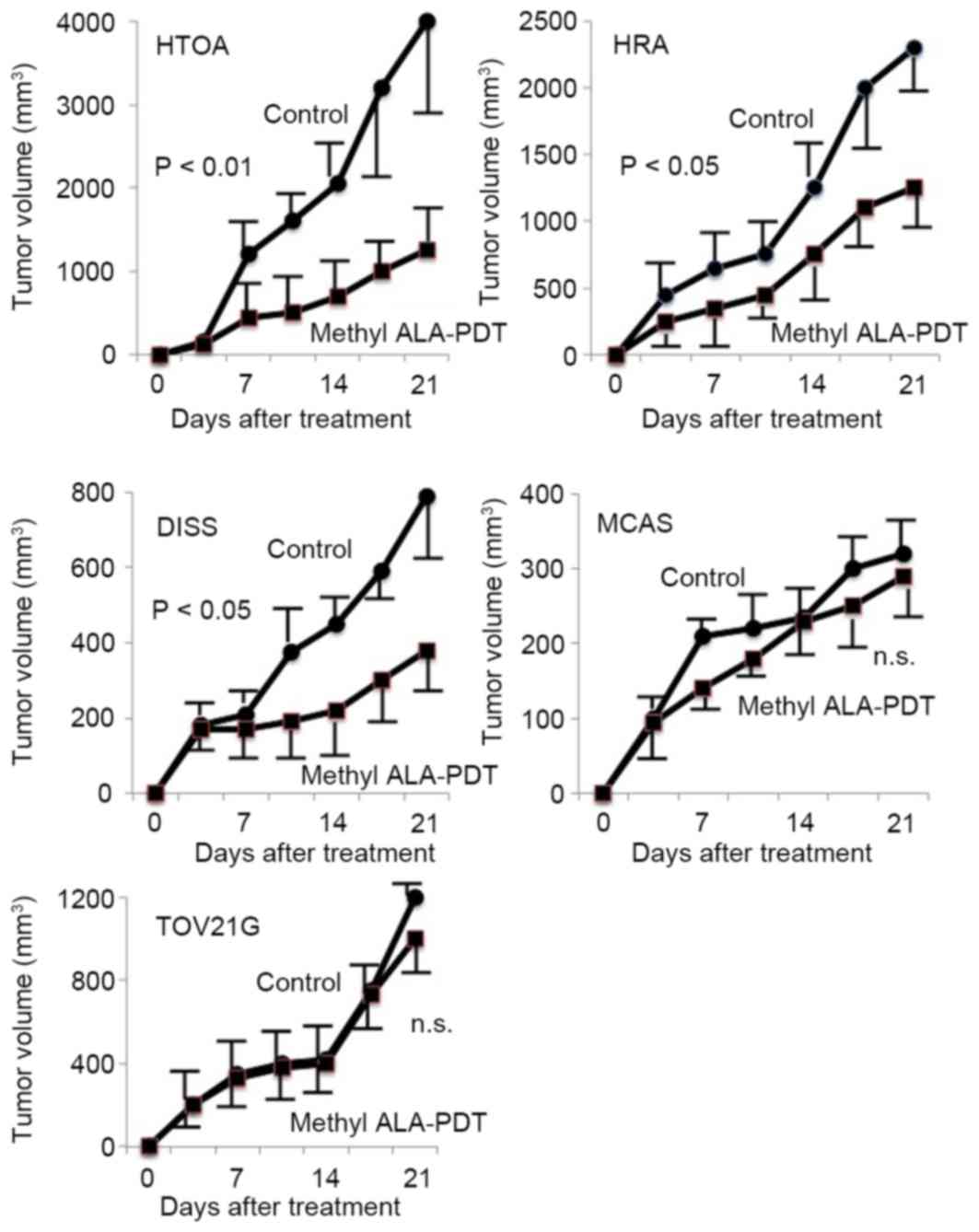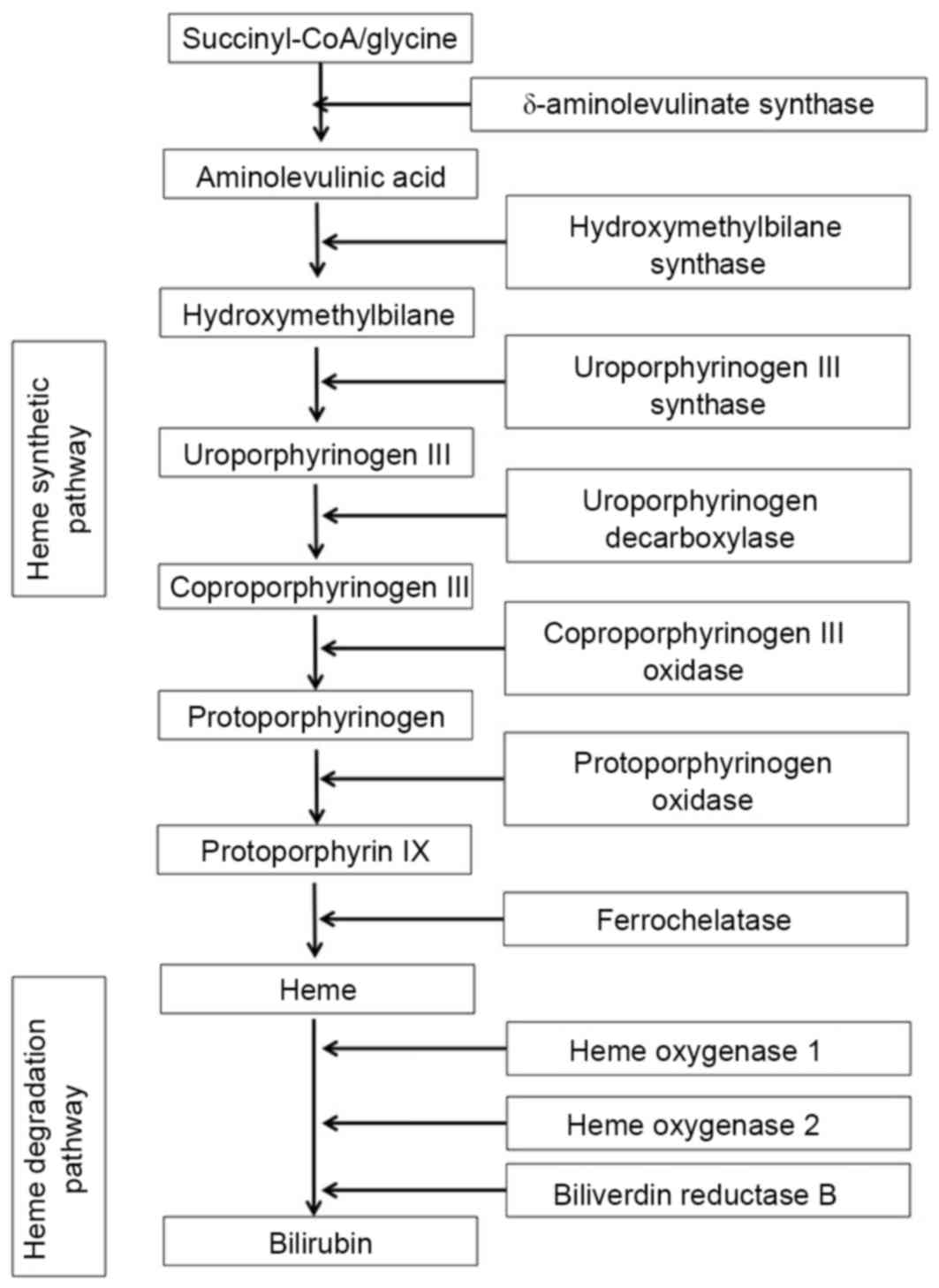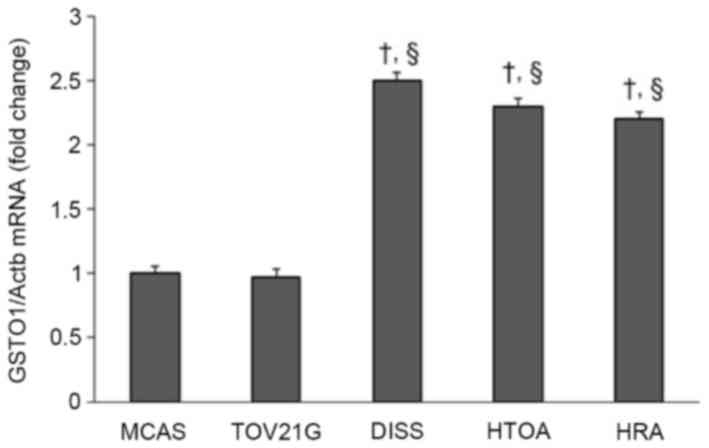|
1
|
Hofstetter G, Concin N, Braicu I, Chekerov
R, Sehouli J, Cadron I, van Gorp T, Trillsch F, Mahner S, Ulmer H,
et al: The time interval from surgery to start of chemotherapy
significantly impacts prognosis in patients with advanced serous
ovarian carcinoma-analysis of patient data in the prospective OVCAD
study. Gynecol Oncol. 131:15–20. 2013. View Article : Google Scholar : PubMed/NCBI
|
|
2
|
Akeson M, Zetterqvist BM, Dahllöf K,
Brännström M and Horvath G: Effect of adjuvant paclitaxel and
carboplatin for advanced stage epithelial ovarian cancer: A
population-based cohort study of all patients in western Sweden
with long-term follow-up. Acta Obstet Gynecol Scand. 87:1343–1352.
2008. View Article : Google Scholar : PubMed/NCBI
|
|
3
|
Siegel R, Naishadham D and Jemal A: Cancer
statistics, 2013. CA Cancer J Clin. 63:11–30. 2013. View Article : Google Scholar : PubMed/NCBI
|
|
4
|
Casson AG: Photofrin PDT for early stage
esophageal cancer: A new standard of care? Photodiagnosis Photodyn
Ther. 6:155–156. 2009. View Article : Google Scholar : PubMed/NCBI
|
|
5
|
Ikeda N, Usuda J, Kato H, Ishizumi T,
Ichinose S, Otani K, Honda H, Furukawa K, Okunaka T and Tsutsui H:
New aspects of photodynamic therapy for central type early stage
lung cancer. Lasers Surg Med. 43:749–754. 2011. View Article : Google Scholar : PubMed/NCBI
|
|
6
|
Spinelli P, Dal Fante M and Mancini A:
Current role of laser and photodynamic therapy in gastrointestinal
tumors and analysis of a 10-year experience. Semin Surg Oncol.
8:204–213. 1992. View Article : Google Scholar : PubMed/NCBI
|
|
7
|
Choi MC, Lee C and Kim SJ: Efficacy and
safety of photodynamic therapy for cervical intraepithelial
neoplasia: A systemic review. Photodiagnosis Photodyn Ther.
11:479–480. 2014. View Article : Google Scholar : PubMed/NCBI
|
|
8
|
Dougherty TJ, Lawrence G, Kaufman JH,
Boyle D, Weishaupt KR and Goldfarb A: Photoradiation in the
treatment of recurrent breast carcinoma. J Natl Cancer Inst.
62:231–237. 1979.PubMed/NCBI
|
|
9
|
Wakui M, Yokoyama Y, Wang H, Shigeto T,
Futagami M and Mizunuma H: Efficacy of a methyl ester of
5-aminolevulinic acid in photodynamic therapy for ovarian cancers.
J Cancer Res Clin Oncol. 136:1143–1150. 2010. View Article : Google Scholar : PubMed/NCBI
|
|
10
|
Furuyama K, Harigae H, Kinoshita C,
Shimada T, Miyaoka K, Kanda C, Maruyama Y, Shibahara S and Sassa S:
Late-onset X-linked sideroblastic anemia following hemodialysis.
Blood. 101:4623–4624. 2003. View Article : Google Scholar : PubMed/NCBI
|
|
11
|
Kikuchi Y, Kizawa I, Oomori K, Miyauchi M,
Kita T, Sugita M, Tenjin Y and Kato K: Establishment of a human
ovarian cancer cell line capable of forming ascites in nude mice
and effects of tranexamic acid on cell proliferation and ascites
formation. Cancer Res. 47:592–596. 1987.PubMed/NCBI
|
|
12
|
Wetterberg L: Acute porphyria and lead
poisoning. Lancet. 1:4981966. View Article : Google Scholar : PubMed/NCBI
|
|
13
|
Ho PS, Hoffman BM, Kang CH and Margoliash
E: Control of the transfer of oxidizing equivalents between heme
iron and free radical site in yeast cytochrome c peroxidase. J Biol
Chem. 1258:4356–4363. 1983.
|
|
14
|
Kodym R, Calkins PR and Story MD:
Anthracycline-induced erythroid differentiation of K562 cells is
inhibited by p28, a novel mammalian glutathione-binding stress
protein. Leuk Res. 25:151–156. 2001. View Article : Google Scholar : PubMed/NCBI
|
|
15
|
Paiva L, Hernández A, Martínez V, Creus A,
Quinteros D and Marcos R: Association between GSTO2 polymorphism
and the urinary arsenic profile in copper industry workers. Environ
Res. 110:463–468. 2010. View Article : Google Scholar : PubMed/NCBI
|
|
16
|
Hofer T, Wenger RH, Kramer MF, Ferreira GC
and Gassmann M: Hypoxic up-regulation of erythroid
5-aminolevulinate synthase. Blood. 101:348–350. 2003. View Article : Google Scholar : PubMed/NCBI
|
|
17
|
Solár P, Koval J, Mikes J, Kleban J,
Solárová Z, Lazúr J, Hodorová I, Fedorocko P and Sytkowski AJ:
Erythropoietin inhibits apoptosis induced by photodynamic therapy
in ovarian cancer cells. Mol Cancer Ther. 7:2263–2271. 2008.
View Article : Google Scholar : PubMed/NCBI
|
|
18
|
Jung KA, Choi BH and Kwak MK: The
c-MET/PI3K signaling is associated with cancer resistance to
doxorubicin and photodynamic therapy by elevating BCRP/ABCG2
expression. Mol Pharmacol. 87:465–476. 2015. View Article : Google Scholar : PubMed/NCBI
|
|
19
|
Luna MC, Wong S and Gomer CJ: Photodynamic
therapy mediated induction of early response genes. Cancer Res.
54:1374–1380. 1994.PubMed/NCBI
|
|
20
|
Meng F, Zhang Y, Liu F, Guo X and Xu B:
Characterization and mutational analysis of omega-class GST (GSTO1)
from Apis cerana cerana, a gene involved in response to oxidative
stress. PLoS One. 9:e931002014. View Article : Google Scholar : PubMed/NCBI
|
|
21
|
Li Z, Sun L, Lu Z, Su X, Yang Q, Qu X, Li
L, Song K and Kong B: Enhanced effect of photodynamic therapy in
ovarian cancer using a nanoparticle drug delivery system. Int J
Oncol. 47:1070–1076. 2015.PubMed/NCBI
|
|
22
|
Koide Y, Urano Y, Yatsushige A, Hanaoka K,
Terai T and Nagano T: Design and development of enzymatically
activatable photosensitizer based on unique characteristics of
thiazole orange. J Am Chem Soc. 131:6058–6059. 2009. View Article : Google Scholar : PubMed/NCBI
|

















